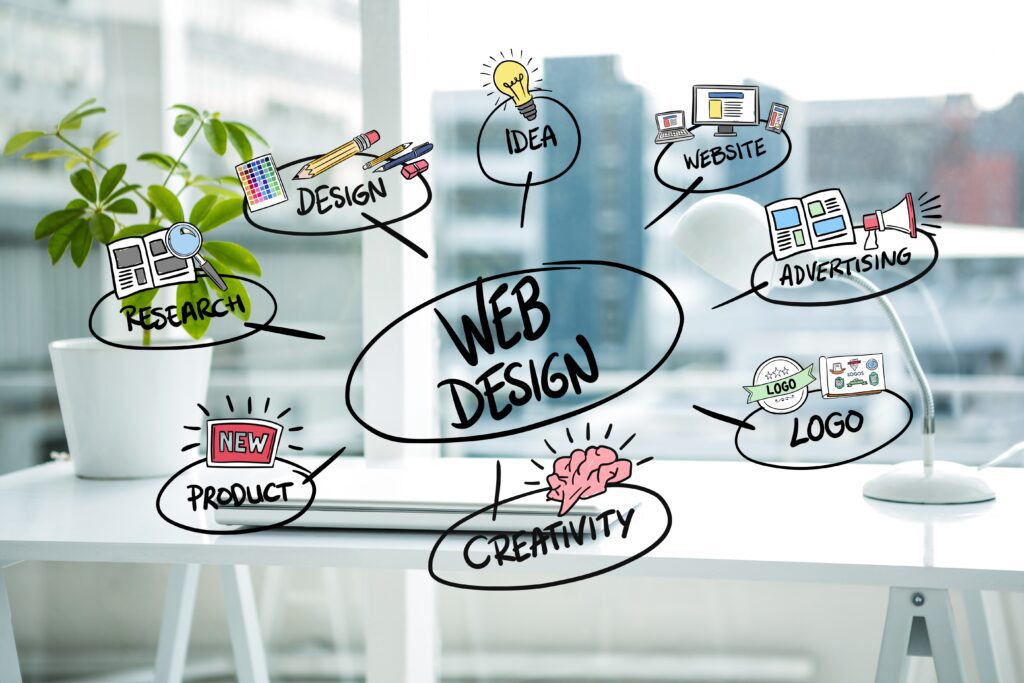- In today's digital age, a website is often the first point of contact for potential customers. Whether it's an e-commerce platform or a corporate site, how well your website performs and how easy it is to navigate can make all the difference in attracting and retaining users. This is where User Experience (UX) Design comes into play. A well-designed website not only captivates users but also provides them with a seamless, engaging experience that leaves a lasting impression.
What is UX Design and Why is it Important?
- UX Design refers to the process of enhancing the usability, accessibility, and overall satisfaction a user has when interacting with a website. It encompasses everything from the site's appearance to its functionality, ensuring that users find what they need with minimal effort.
- Why is UX design important? A good UX design can significantly improve user satisfaction, increase conversion rates, and drive more sales or inquiries. In fact, research shows that nearly 88% of online consumers are less likely to return to a site after a bad experience. Therefore, focusing on UX is essential for retaining visitors and building trust with your audience.
Key Elements of Effective UX Design
1. Usability
- Usability is the foundation of UX design. A website must be easy to use and intuitive. This means a user should be able to navigate through the site effortlessly and find the information they need in as few clicks as possible. Navigation should be simple, and all links should be functional.
2. Responsiveness
- With more users browsing the internet from mobile devices, it's crucial that your website is responsive. This means your website should automatically adjust to any screen size—whether it's a smartphone, tablet, or desktop—ensuring users have a consistent experience across devices.
3. Page Load Speed
- Website load time is a critical factor for UX. Users tend to abandon websites that take more than 3 seconds to load. Optimizing images, using a content delivery network (CDN), and improving backend code can help improve load speed.
4. Content Layout
- A clean, organized layout enhances UX by guiding users’ attention to the most important content. Proper use of white space and strategically placed text and images improves readability and makes the site more visually appealing.
5. Visual Design
- Visual design is not just about aesthetics; it also contributes to the functionality of the site. Consistent color schemes, typography, and visual elements should all align with the brand identity, creating an atmosphere that matches the website's purpose.
6. Clear Calls to Action (CTA)
- A website must have clear and easily identifiable calls to action (CTAs). Whether it's to contact the company, purchase a product, or sign up for a newsletter, well-placed CTAs encourage users to take the desired action.
7. Accessibility
- A good website should be accessible to all users, including those with disabilities. By following accessibility guidelines such as using alt text for images, proper contrast, and keyboard navigability, you can make sure that your website is usable by everyone.

How Arobase Technologies Creates User-Friendly Websites
- At Arobase Technologies, we understand the importance of user experience in driving the success of your website. We prioritize a user-centered approach to web design, ensuring that every element of the site is crafted with the end-user in mind. Here's how we achieve this:
1. Research & Planning
- Our team begins by conducting thorough research to understand your target audience. By analyzing user behavior, industry trends, and competitor sites, we can create a user-focused design strategy that aligns with your goals.
2. Wireframing & Prototyping
- We start by creating wireframes and prototypes, ensuring the site’s structure, layout, and content flow are optimized for usability. This step allows us to test and iterate designs before they are finalized.
3. Responsive Design
- We ensure that every website we design is mobile-friendly and responsive, providing an exceptional browsing experience across all devices.
4. Fast Load Times
- We employ best practices in optimizing images, scripts, and content to ensure that your website loads quickly. This is crucial for retaining users and improving SEO.
5. User Testing
- Before launching, we conduct extensive user testing to gather feedback and identify potential issues. This ensures that the final product meets the needs of users while also achieving your business objectives.
6. Ongoing Support & Updates
- User experience doesn’t end at launch. We provide ongoing support and updates to ensure that your website continues to perform optimally and meet the evolving needs of your audience.
Conclusion
- In today’s competitive digital landscape, creating a seamless and enjoyable user experience is critical to the success of your website. By focusing on key elements such as usability, responsiveness, and accessibility, you can ensure that visitors stay engaged and are more likely to convert. At Arobase Technologies, we specialize in crafting websites that are not only visually stunning but also provide an intuitive and user-friendly experience. Let us help you design a website that enhances your brand and delights your users!


